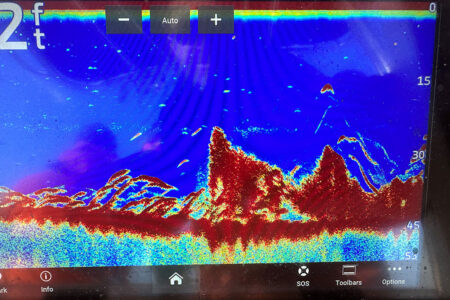Some basic maintenance and a touch of TLC tohave your tackle in tip top shape for the upcoming season.
Now that we are inching closer to the 2019 fishing season, there is no better time than the present to tend to your tackle. Too many anglers I know stash their tackle away at the end of the season and wait until the start of anew season before doing any maintenance, which may prove to be too late. The good news if you fall into that category, is that there is still time to get your tackle in order before the spring fishing gets underway. Your gear is one of the most important aspects of your fishing success and ensuring your fishing tackle is in good working order will avoid a lot of frustration once our favorite species arrive on the fishing scene.
The Salt Assault
Saltwater is the enemy when it comes to fishing tackle. Left unattended, dried up salt residue over a very short period of time causes corrosion and pitting both inside and outside of reels causing bearings to corrode and freeze up, which can become quite costly when parts must be replaced. Meantime the rod guides become etched, affecting casts and causing line fray, which often requires replacement. In addition, soft and hard baits, jigs and all terminal tackle put back into the tackle bag without at least a rinsing of freshwater throughout the season will certainly rust and corrode.Thankfully, with proper cleaning and some simple repairs, your tackle can be ready to rock and roll come spring.
Reel Doctor
At least once a year, quality saltwater reels should be taken to a professional for a complete tune-up. This ensures that you get many years of quality performance from your reels. It is also a good way to identify any damaged parts and prevent more serious problems that could occur. Should you decide to do reel repairs on your own, clean off any dirt, grime and salt residue on the surface before you dig into the inner workings of the reel so that surface soil won’t work its way into the gears. Two types of lubricants are required when being applied to a reel; reel oil and reel grease. Gears get the grease, while oil is applied to all moving parts, including reel handles, joints and entry points. Be sure to add a drop or two to the reel handles’ knob joints.
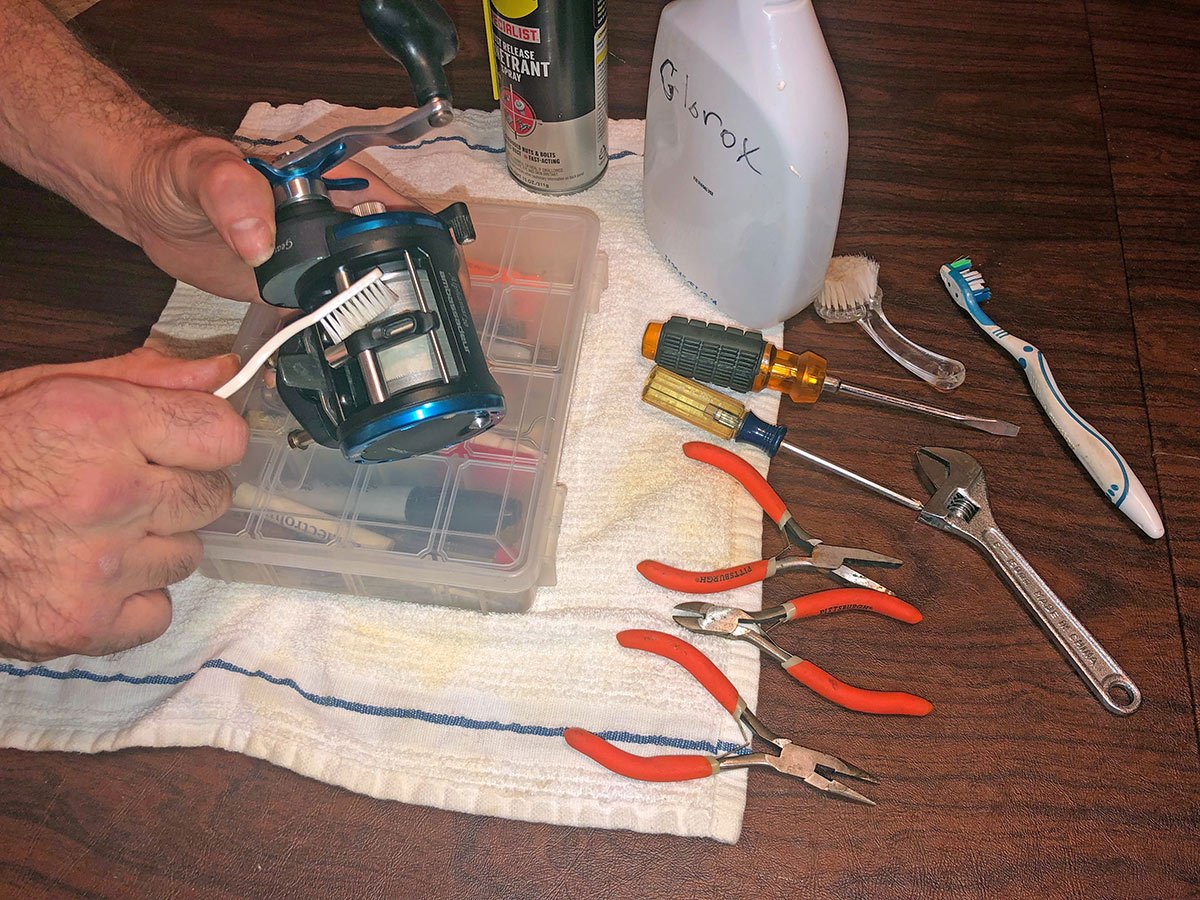
To make the task easier, there are several great reel cleaning and maintenance kits out there, however the Ardent Reel Kleen Cleaning Kit has everything you need to get your favorite reel back in “like new” condition including Reel Butter Oil and Grease, Reel Clean, a multi-tool screwdriver, cleaning swabs, brush, and a silicone treated towel. It also gives directions so that even a novice can service their own reels.
A common practice for many anglers is to store reels in a soft zippered case, which is great for protecting reels against dings and scratches. However, never store a reel wet in its case, since trapped moisture will have no way to escape and can lead to corrosion. A good idea is to leave the case open so that moisture, if present, can dissipate.
Caring for Line
Neglecting your mono or braid is a common cause of angler misery. Line that looks old probably is and must be replaced. If it shows too much memory when you pull an arm’s length from the spool, odds are you are headed for trouble. If you have any doubt at all about its condition, replace with new line. Paramount to performance, reels cannot perform well with either too little or too much line. If the line does not reach to within 1/8 inch of the rim, you may need to replace the line. This winter preparation period is also a good time to decide if you want to try a different line this season or experiment with several different lines. The proliferation of fishing lines in recent years offers a nearly ideal solution to every technique and fishing situation. Do a little research and make an intelligent choice. Most lines benefit from a generous squirt of a quality line treatment immediately after you’ve spooled your reel and once again shortly before you take to the water. Check the condition of the line throughout the season for abrasion, twist and wear,but take care of this all-important matter now if you want to get off to a problem-free start this spring.
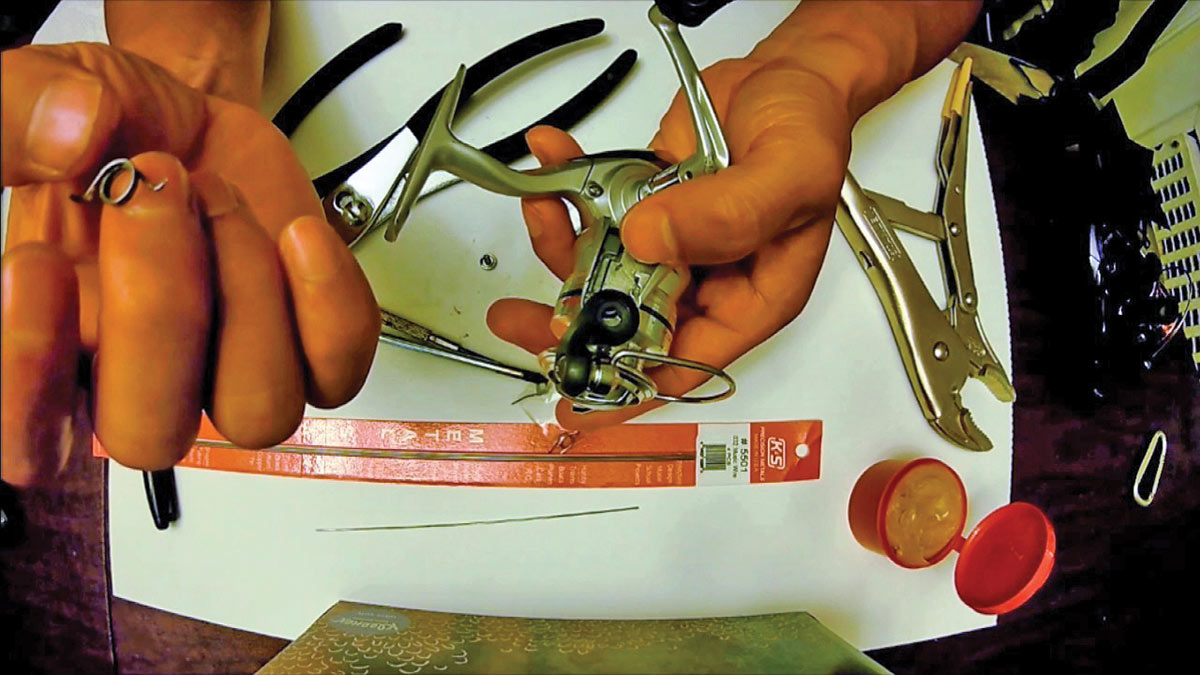
Inspect Your Rods
Fishing rods are pretty much forgotten about during the winter season. When it comes to rods, there are two main factors that need attention. First, checking the guides to make sure there are no chips or cracks that could cut your line. A simple way to check for nicks or cracks is to run a cotton swab or cotton ball around the guide ring. If it catches or frays, you have a problem and the guide needs to be replaced.
Secondly, rods and cork handles come clean quickly, although cork handles might take a little more work. Mild soap and water will get the bulk of the task done. If you must apply stronger liquid cleaners, check the warning labels on usage first. Avoid abrasive cleansers. With the cork grips, you can clean them safely with a solvent such as isopropyl alcohol or with lacquer thinner, either of which work well for removing the main source of discoloration, which is the oil from an angler’s hands. Wipe the rod clean with a clean rag or paper towel afterward. Mr. Clean Magic Erasers also do an incredible job of cleaning off the cork grips and handles after a long fishing season. The magic erasers also play a huge role in cleaning items like lures and tackle boxes. Just wet them and scrub liberally on most products to get back to basically a showroom finish. They also do an impeccable job of getting off the rust that sometimes accumulates around the lure hook holder on the bottom section of the rod. After the rods have been overhauled, store the loose rods in a 5-gallon bucket butt first or purchase a rod rack. I always keep the plastic sleeve the rod came in for winter storage to keep it dust free.
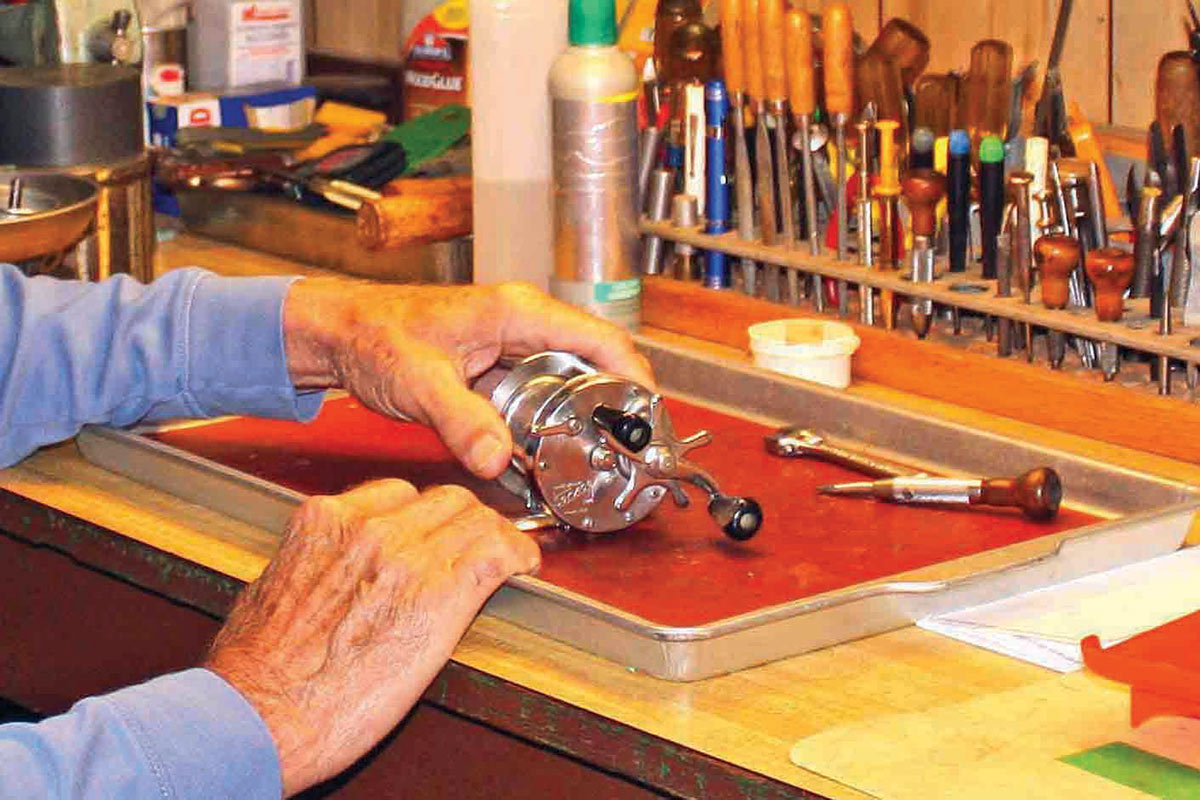
Terminal Care
Organize your rigs and lures in a way that makes sense to you. Whether you decide to put all lures of a certain type together or organize them by season or species is your choice. Tackle organization should always be about having what you need when you need it. Go through all your tackle bags, boxes and trays and take inventory. Organize your tackle in a way that makes every item accessible and easy to find. Take stock of your terminal tackle and replenish short supplies. Determine what items you would like to upgrade for the coming season. Now might be a good time to trash those old snaps and snap swivels and replace them with a quality brand such as Spro power swivels. Being cheap on snaps and swivels is hurtful way to lose a big fish when you consider the minimal cost of these items.
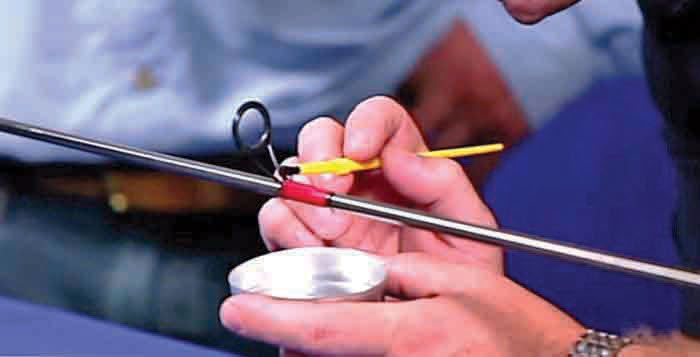
As part of organizing your gear, go over all your terminal tackle, making sure that your hooks are sharp and that jigs, lures, leaders, and other gear are clean and in their proper place. This season, don’t be the angler who gets skunked due to a dull hook. Hone your hooks now and keep them sharp during the season by keeping a sharpener within easy reach during all of your fishing trips. This is especially important when you are fishing with artificial lures.
Make sure you have other tools like hook removers, pliers and a tape measure for length limits in your gear bag. Replace the batteries in flashlights and electronics, and see that they are all in operating order. Don’t forget your landing net. Is it in good enough shape to land that double-digit doormat or trophy striper? Don’t wait until it fails you to replace it.
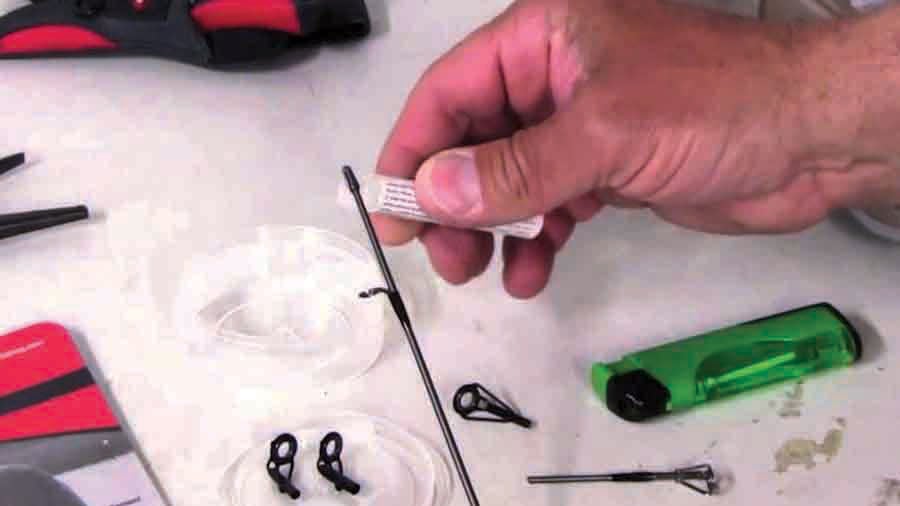
Take Inventory
Most serious anglers have more tackle than can be used in one’s lifetime. Therefore taking inventory will help with getting reacquainted with gear long forgotten and even some you may have purchased recently but was stashed away and never brought into play. Inventory includes soft body plastic baits, hard baits, hooks, line, terminal tackle and boxes. I keep an ample supply of Plano 3700 boxes on hand to build travel boxes by location for the spring. Although I also make use of tackle bags, I find it much easier to access what I need in a tackle box like the 3700. It is also important to inventory tools used while fishing, which includes scissors, pliers, clippers and a small pocket knife. Keep in mind that all tackle boxes and bags should be emptied, cleaned, dried thoroughly and refilled with your lures and terminal gear.
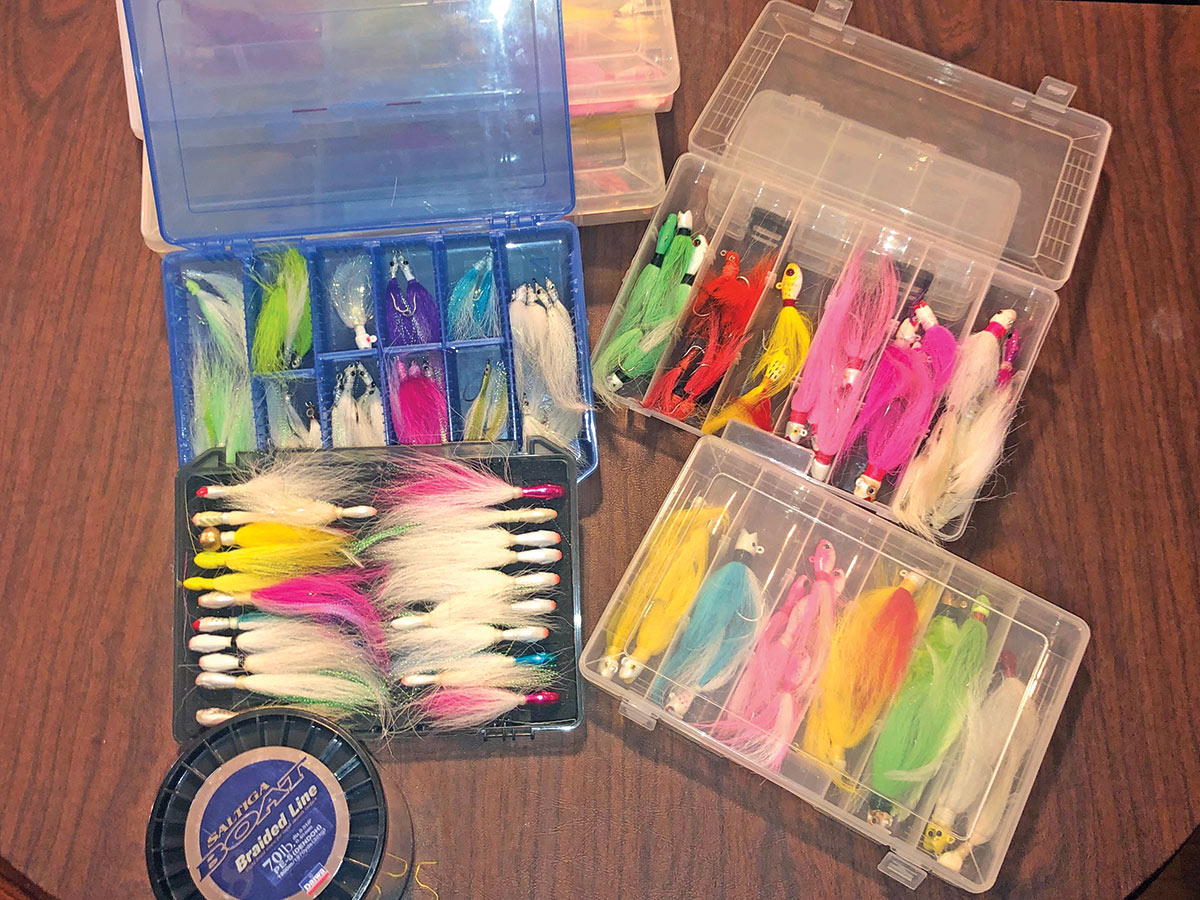
Life After Inventory
Winter time is not only a great time to inventory, it’s also is a great time to work on individual lures. I like to go over each one, change out hooks if needed and sharpen all hooks with a sharpening stone. As a general rule, if a hook is bent or a hook point is turned, replace the hook. I like to use different makes such as VMC, Mustad and Gamakatsu hooks based on their intended application. Lures that have rust spread onto the bodies can be easily cleaned with a good scrub from one of those wonderful magic erasers. There is also the possibility that moisture did some rusting and staining in those tackle bags and boxes. Change out rusty hooks with a pair of O-ring pliers. Upgrade hooks when you can, especially on your favorite and most productive lures. Organize jigs by styles, weight and function. Throw out rusty jigs.
Taking care of your tackle now ensures that when the nice weather does return, you will be ready. This also keeps fishing at the forefront of my activities year-round. Organizing your tackle will help you save time on the water and allow you to be more successful over the course of a season. Organized anglers catch more fish.



